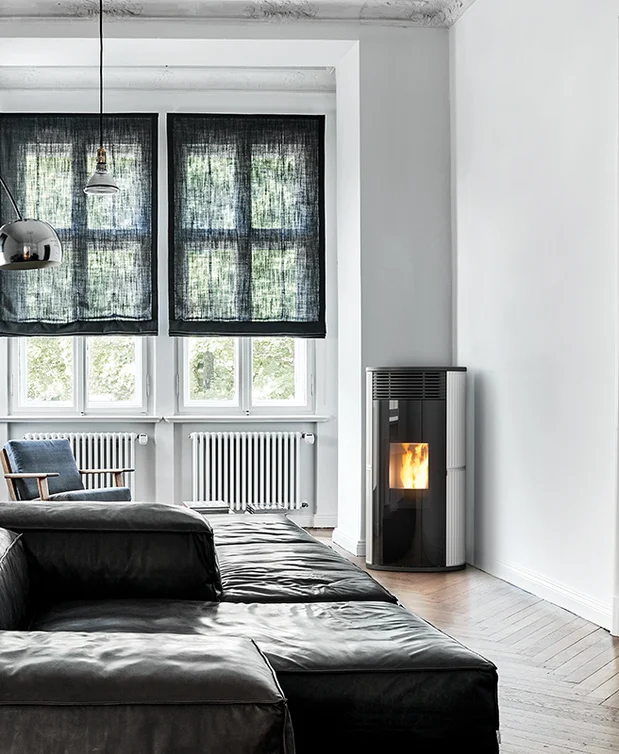How to Choose and Assess the Differences
If you're looking for a stove that heats not just one room but large areas or even an entire house, you've probably come across hydro pellet stoves, also known as thermo-stoves or hydro-stoves. As you may already know, the hydro stove heats the water in a radiator or underfloor heating system, resulting in significant savings on utility bills. What you need to know now is how to identify the best hydro pellet stoves.
Let’s proceed step by step. What features and technologies are worth knowing to evaluate the price differences between hydro stoves?
PELLET TANK SIZE
This is one of the first aspects to consider. Since it needs to heat an entire system, a hydro stove will run longer than a standard air stove. Consequently, it’s advisable to choose a model with a large tank to avoid having to refill the pellets multiple times during the day.
VENTILATION
Even though most of the heat produced is transferred to the water in the system, the hydro stove naturally releases a small amount of heat into the room where it is installed. Some models also offer a fan that more quickly and efficiently distributes heat into the air.
You might need this feature if the room stays cold for a long time and you need to warm it quickly—for example, if you plan to install the hydro stove in a mountain apartment that remains closed for months. It could also be useful if the room where the hydro stove is installed is very large or poorly insulated.
CLEANING FREQUENCY
A hydro pellet stove produces ash residues that must be removed from the burner and ash drawer with a regular vacuum cleaner. This cleaning is necessary for all stoves, but since a hydro stove operates for more hours, the residue quantity may be greater.
Therefore, it’s always important to assess how large the ash drawer is so you don’t have to empty it multiple times a day.
Another convenient feature that extends the cleaning interval is the self-cleaning burner. This is a scraping system that activates automatically, clears ash from the burner, and prevents buildup.
MCZ has introduced this type of burner in all its most advanced hydro stoves, such as the PAD Hydro Matic, shown in the photo below.
QUALITY CERTIFICATIONS
When evaluating the best hydro stoves, don’t forget to check if they have quality certifications. Here’s a list of the most common ones:
- Energy Efficiency Class (mandatory): Choose a hydro stove with an A+ or A++ rating.
- Environmental Certification DM 186/2017 (mandatory) or the voluntary “Clean Air” environmental quality class: Choose a hydro stove with at least 4 stars.
- Other certifications, such as the German BAFA or the Austrian 15a, are not mandatory, but if you find a hydro stove with them, you can be assured of an excellent product in terms of energy efficiency.
OTHER FACTORS THAT MAKE A DIFFERENCE IN THE BEST HYDRO STOVES
There are other aspects that can enhance the quality of a hydro stove and also impact the final price:
- The presence of thermostats and temperature probes (included in the price or offered as optional), which communicate with the stove and enable precise combustion control based on the detected temperature and the one set by the user.
- The presence of remote control systems such as Wi-Fi connectivity, which allows you to, for instance, turn on the stove from your office and return to a warm home.
- Aesthetic factors, such as design details, the beauty of the flame, and the refinement and quality of the materials used in the external covering.
Want to know more? Request a quote from the best professional in your area.



